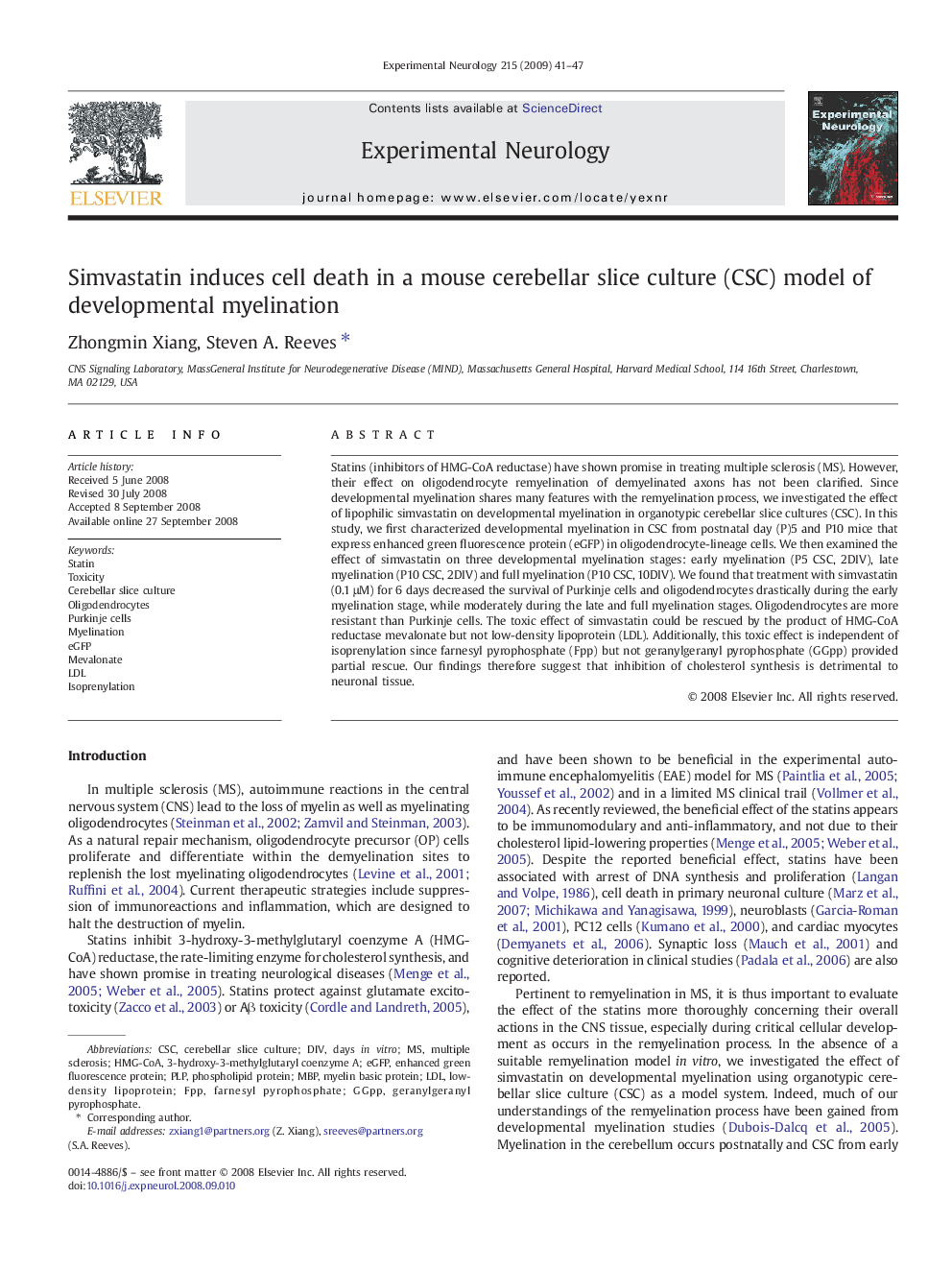| Article ID | Journal | Published Year | Pages | File Type |
|---|---|---|---|---|
| 3056384 | Experimental Neurology | 2009 | 7 Pages |
Statins (inhibitors of HMG-CoA reductase) have shown promise in treating multiple sclerosis (MS). However, their effect on oligodendrocyte remyelination of demyelinated axons has not been clarified. Since developmental myelination shares many features with the remyelination process, we investigated the effect of lipophilic simvastatin on developmental myelination in organotypic cerebellar slice cultures (CSC). In this study, we first characterized developmental myelination in CSC from postnatal day (P)5 and P10 mice that express enhanced green fluorescence protein (eGFP) in oligodendrocyte-lineage cells. We then examined the effect of simvastatin on three developmental myelination stages: early myelination (P5 CSC, 2DIV), late myelination (P10 CSC, 2DIV) and full myelination (P10 CSC, 10DIV). We found that treatment with simvastatin (0.1 μM) for 6 days decreased the survival of Purkinje cells and oligodendrocytes drastically during the early myelination stage, while moderately during the late and full myelination stages. Oligodendrocytes are more resistant than Purkinje cells. The toxic effect of simvastatin could be rescued by the product of HMG-CoA reductase mevalonate but not low-density lipoprotein (LDL). Additionally, this toxic effect is independent of isoprenylation since farnesyl pyrophosphate (Fpp) but not geranylgeranyl pyrophosphate (GGpp) provided partial rescue. Our findings therefore suggest that inhibition of cholesterol synthesis is detrimental to neuronal tissue.
